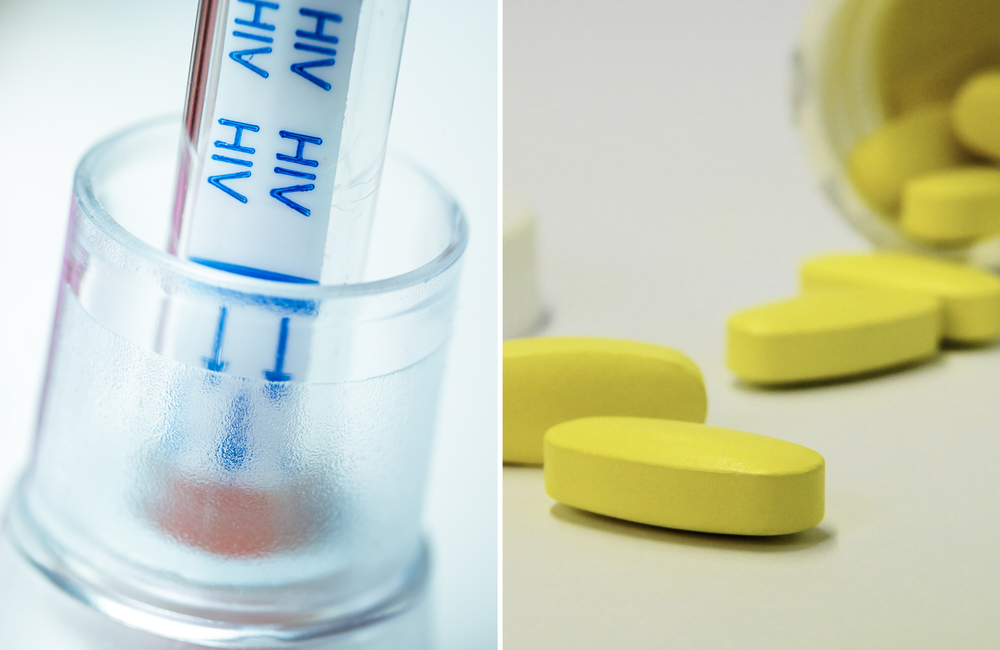
Modelling estimates suggest that new HIV infections in the US could be reduced by as much as 94% before 2030, if the current HIV prevention budget is spent more efficiently. Priorities would be linking those diagnosed with HIV to care, ensuring that they receive treatment and getting them to the point of viral suppression. Less money would be spent on screening low-risk heterosexuals and PrEP.
This research was conducted by Dr Stephanie Sansom and colleagues at the Centers for Disease Control and Prevention (CDC) and published in the American Journal of Public Health.
Despite spending a significant amount on HIV prevention, new HIV diagnoses in the US have remained largely stable since 2013, with around 38,000 new HIV diagnoses in 2018. If public and private HIV prevention funds continue to be spent as they currently are, there will be approximately 33,000 new HIV infections annually until 2027. While the US has pledged to end the HIV epidemic by 2030, this is unlikely to happen with current spending allocations.
Effective antiretroviral therapy (ART) leads to viral suppression, which works to prevent the spread of HIV (Undetectable = Untransmittable, or U=U). This can have a significant impact on the number of new HIV diagnoses over time.
Researchers wanted to look at how to optimise spending to ensure the greatest reduction in new HIV infections by 2027. Both public spending (e.g. state programmes and Medicare) and private spending (e.g. insurers covering PrEP and ART) were considered together. They conducted economic modelling and investigated the impact redirected funding would have on the number of new HIV infections annually, for 2018-2027.
They considered 14 core interventions, grouped according to:
- HIV screening for high- and low-risk men who have sex with men (MSM), high- and low-risk heterosexuals, and people who inject drugs (five interventions)
- Pre-exposure prophylaxis (PrEP) for high-risk MSM, high-risk heterosexuals, and people who inject drugs (three interventions)
- HIV care interventions from linkage to care, to prescription of ART, to adherence and viral suppression (five interventions)
- Syringe services programmes (one intervention).
Current funding
The $2.6 billion currently spent HIV prevention services is split as follows:
- HIV screening – 30%, including 25% of the total funding for low-risk heterosexuals and only 1% for high-risk MSM.
- PrEP – 53%, including 6% for high-risk heterosexuals, 46% for high-risk MSM and no funding for people who inject drugs.
- HIV care interventions – 17%, including 6% for ART for those starting treatment and 10% for ART for those who are virally suppressed.
- Syringe services programmes – 1%.
Limited-reach scenario
This scenario was based on an estimation of the number of eligible individuals who could feasibly be reached by targeted interventions. With the funding allocation kept at $2.6 billion, the most impactful interventions were prioritised, while less efficient interventions were not funded.
Projected allocations for the second half of this period, 2023-2027 were:
- HIV screening – 13%, including only 0.2% of the total funding allocated to low-risk heterosexuals, 9% to high-risk heterosexuals and 2% to high-risk MSM.
- PrEP – 60%, with almost all the funding for PrEP going to high-risk MSM.
- HIV care interventions – 25%, including 5% for ART for those starting treatment (14% was allocated to this area for 2018-2022, requiring less for the next cycle) and 19% for ART for those who are virally supressed.
- Syringe services programmes – 2%.
This scenario would result in a 69% decrease in new HIV infections from 2018-2027, with 99% of those with HIV diagnosed (85% of low-risk heterosexuals), 98% linked to care/on treatment and 86% of those on treatment achieving viral suppression.
Ideal-reach scenario
In this best-case scenario, all eligible individuals would be reached by each intervention for the period 2018-2027. Those interventions having the greatest impact on the HIV infection rate the most would be fully funded, while others would not be. The funding allocation was kept at $2.6 billion.
Projected allocations for the second half of this period, 2023-2027:
- HIV screening – 71%, including 8% of the total funding allocated to high-risk MSM, 10% to high-risk heterosexuals and 49% to low-risk heterosexuals. The latter group would have received virtually no allocation for screening prior to this and only became a target group in the second period.
- HIV care interventions – 25%, with almost all of this allocated to ongoing treatment for those who are virally supressed. Two-thirds of the entire budget would have been allocated to these interventions in 2018-2022, including linkage to care and initial ART for newly diagnosed people. Less funding would be required in the second period.
- Syringe services programmes – 5%.
Due to the redistribution of funds towards screening and ensuring that those diagnosed receive ART and becoming virally supressed, funding for PrEP would be decreased to zero for the entire period in this scenario.
Thus, this scenario would result in a 94% decrease in new HIV infections from 2018-2027, with 99.7% of those with HIV diagnosed (97% of low-risk heterosexuals) and 99.7% on treatment and virally suppressed.
Conclusion
“Although PrEP has been clinically proven to be highly efficacious in preventing acquisition of HIV among those susceptible, models comparing interventions show that it is less effective in reducing new HIV cases nationally than ensuring that those already infected cannot transmit to others by achieving and maintaining viral suppression with effective ART,” the researchers conclude.
“Given stable funding and the current effectiveness of intervention delivery, sizeable reductions in HIV incidence may be realized by focusing on screening persons at highest risk of HIV, linking the newly diagnosed to care, and supporting those in treatment to achieve and maintain viral suppression.”
Sansom SL et al. Optimal Allocation of Societal HIV Prevention Resources to Reduce HIV Incidence in the United States. American Journal of Public Health, online ahead of print, 19 November 2020.
